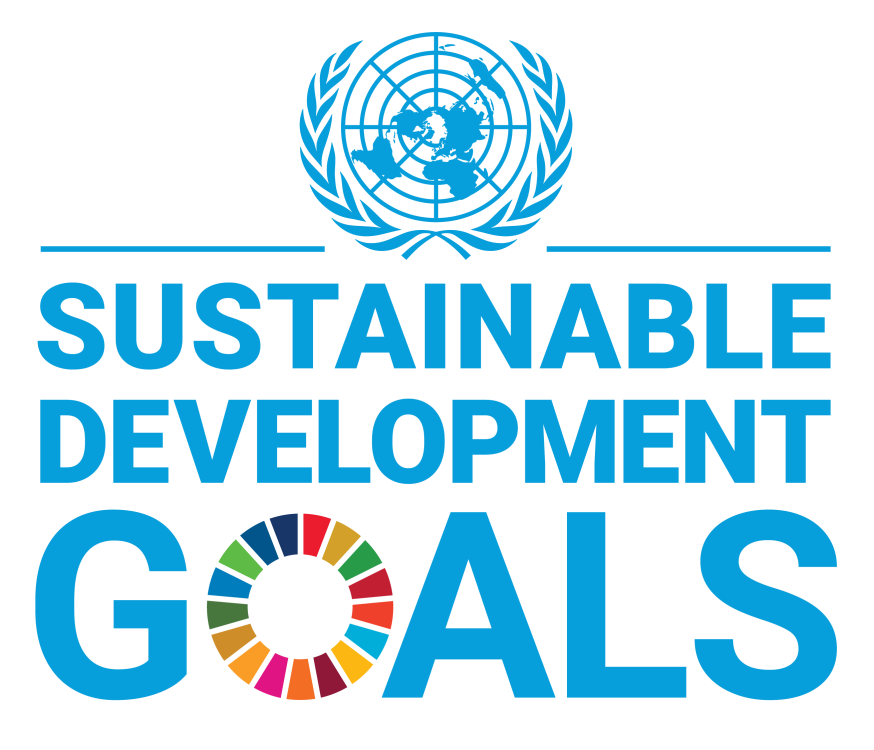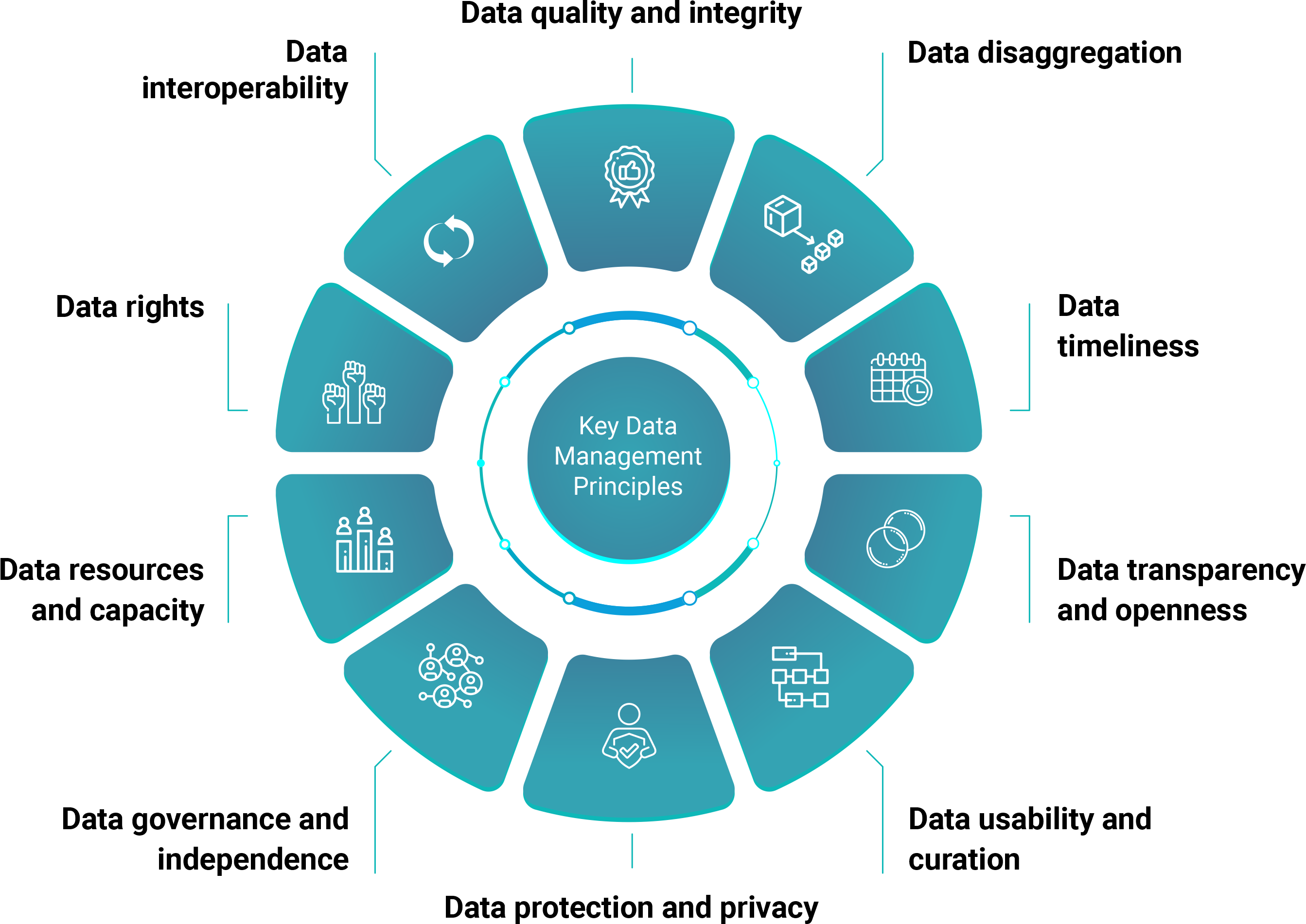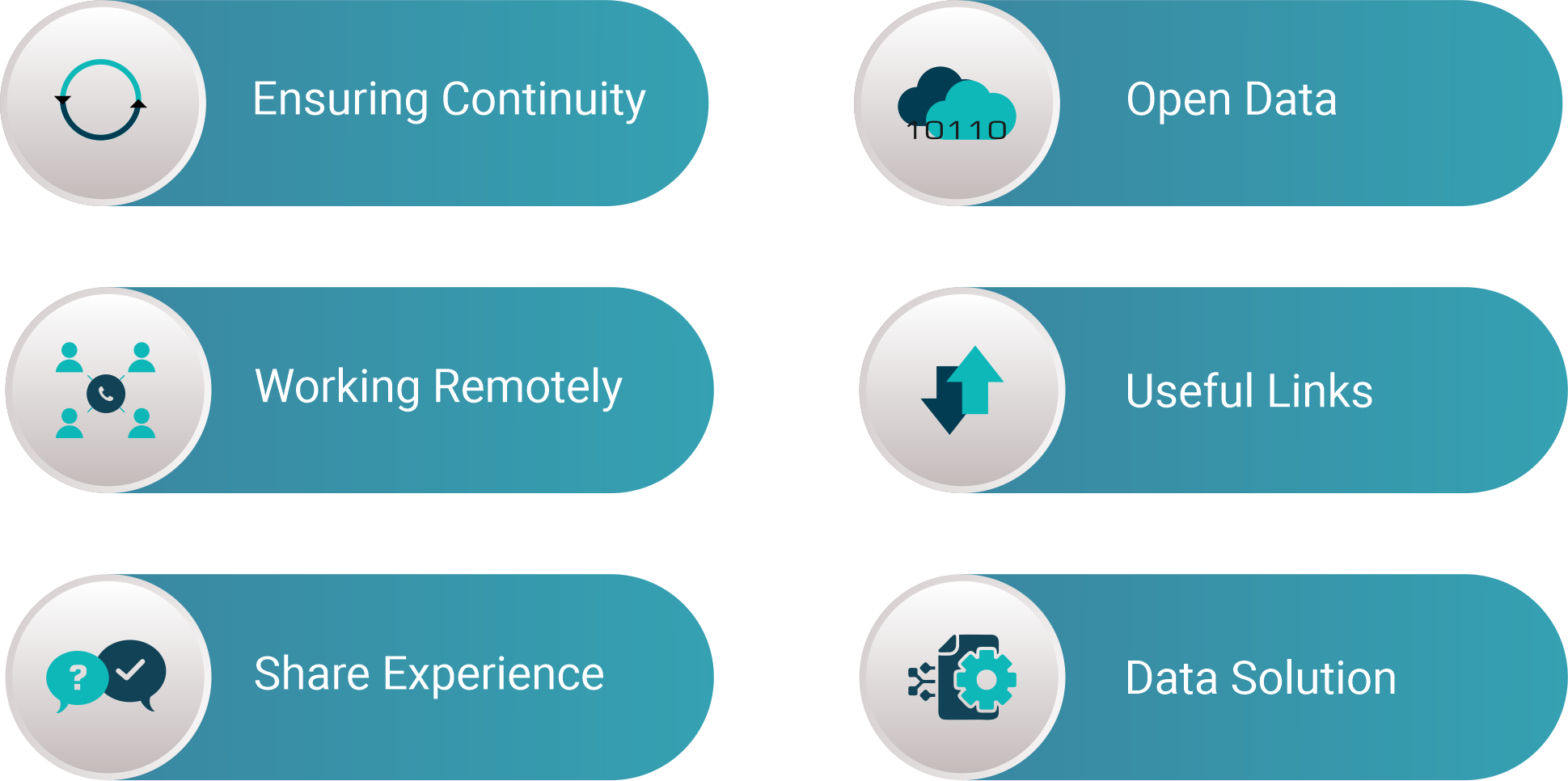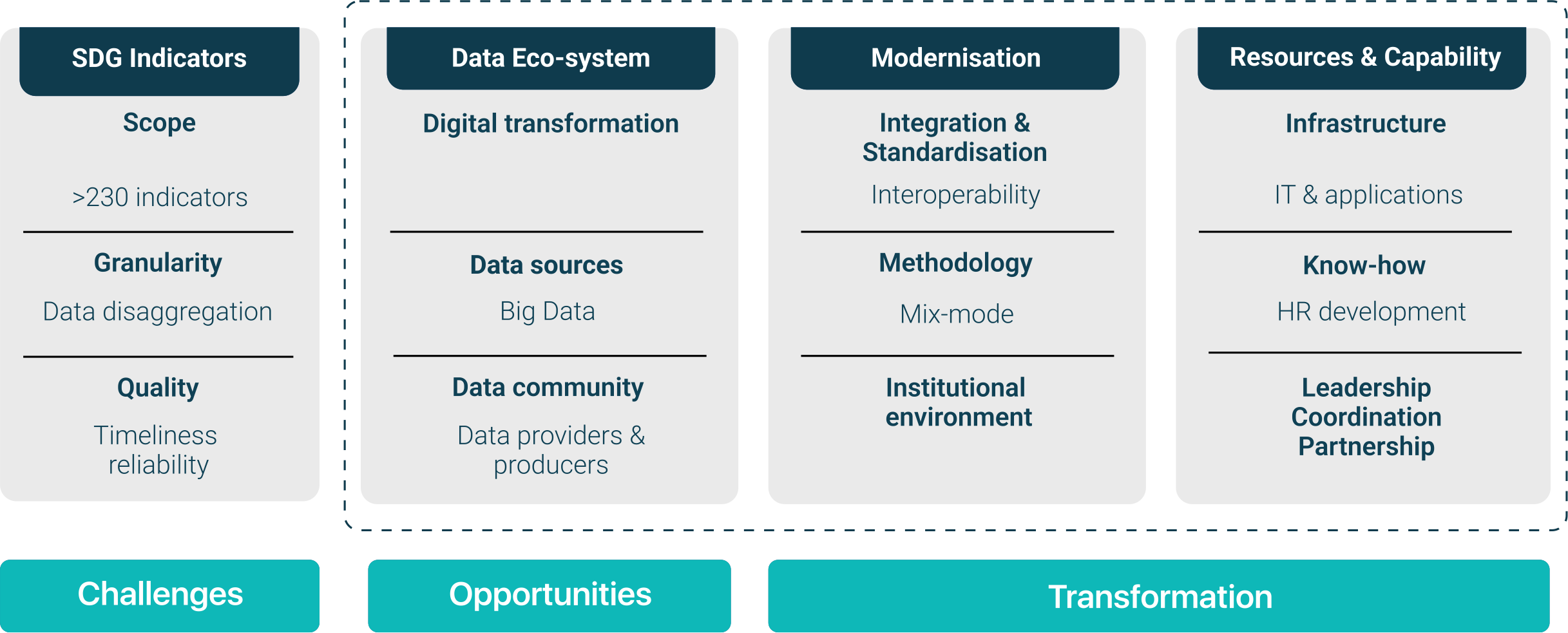1.1 General Context#
This Handbook on Management and Organization of National Statistical Systems is the fourth version of the series of Handbooks (see Annex 1 - The Handbook Series of the Handbook for more details). The Statistical Commission agreed, at its forty-eighth session[1], to develop this fourth edition of the Handbook.
1.1.1 Data revolution for sustainable development: the “first wave”#

In July 2017, United Nations Member States adopted the 231 unique statistical indicators for assessing progress towards achieving 17 Sustainable Development Goals (SDGs) and 169 targets.
Prior to this formal adoption, the United Nations Secretary-General’s Independent Expert Advisory Group on a Data Revolution for Sustainable Development (IEAG) in the 2014 seminal report, A World that Counts: Mobilising the Data Revolution for Sustainable Development (🔗) highlighted two big global challenges for the current state of data:

The challenge of invisibility: data is collected about what is known and visible, but what is not visible get forgotten.
The challenge of inequality: there is a gap between those with and those without the information needed to make decisions.
The Report highlights that new technologies lead to an exponential increase in the volume and types of data available, creating unprecedented possibilities for informing and transforming society and protecting the environment. Governments, companies, researchers, and citizen groups are in a ferment of experimentation, innovation, and adaptation to the new world of data, a world in which data are bigger, faster, and more detailed than ever before. Thus, the Report calls for urgent action to “mobilise the data revolution for all people and the whole planet in order to monitor progress, hold governments accountable and foster sustainable development” based on the following key principles:

Data quality and integrity;
Data disaggregation;
Data timeliness;
Data transparency and openness;
Data usability and curation;
Data protection and privacy;
Data governance and independence;
Data resources and capacity;
Data rights.
In the discussions that have taken place since, the principle of data interoperability has been added to the above. It is defined as ensuring that systems are using the same set of definitions, classifications and methodology, as well as technologically compatible platforms allowing for full harmonisation of interfaces and access protocols (Chapter 10.7.1 — Dissemination by websites and data portals). The principle of data disaggregation underpins the data requirements of the Leave no one behind promise of the 2030 Agenda. The other key principles precisely pinpoint critical challenges in meeting these requirements.
Statistical organizations have been discussing at the sessions of the United Nations Statistical Commission (UNSC), either in special-topic forums or as part of work under the formal agenda, what these principles mean for national statistical offices and national statistical systems. The mandate, functions and working modes of the United Nations Statistical Commission are described in Chapter 16 - The International Statistical System (ISS) and further details can also be found here.
1.1.2 Data revolution for COVID-19: the “second wave”#
While the original discussions on the data revolution in the context of official statistics were inspired by the challenges for meeting the data needs for the SDGs, it may be said that a second wave of the data revolution became imperative in the context of the impact of the COVID-19 pandemic on national statistical systems.
The global COVID-19 crisis affected critical operations across the entire international statistical system. National and international statistical organizations had to take immediate action to ensure the continuity of key statistical compilation activities and the continued availability of data to inform emergency mitigation actions by governments and all sectors of the society. These actions are depicted in Figure 1.

Fig. 1 COVID-19 response
Source: Adapted from: https://covid-19-response.unstatshub.org/#
A description of the initial responses and links to the available knowledge resources on dealing with the impact of COVID-19 on statistical systems is presented in Chapter 15 - Management of Buildings, Physical Space and Finance and are structured around three main actions:
establishing new procedures and workflows, collaborating in virtual teams, and implementing secure remote data access and data exchange capabilities;
adapting and innovating data production methods and processes to ensure continuity of major official statistical programmes;
addressing the increased need for data openness and accessibility to meet the urgent demand for reliable and accurate information.
Before the COVID-19 pandemic, other external shocks or disruptions such as the Global Financial Crisis (GFC) gave rise to questions about what value national statistical systems (NSSs), and in particular national statistical offices (NSOs), brings to societies and economies. However, these disruptive moments are opportunities for NSOs and NSSs not only to survive but also to thrive, and for which the Handbook provides contemporary guidance and examples.
1.1.3 Transformation and modernisation#
Indeed, the changing environment within which national statistical systems and national statistical organizations operate has highlighted the imperative to transform and modernise to grasp the potential of innovative technologies in a rapidly changing data ecosystem. This data ecosystem is characterised by a plethora of sources of data and related producers that have crowded the data space. Thus, transformation also calls for reinforcing leadership, coordination, communication, and dialogue through institutional and organizational reform.
The discussions about a Transformative Agenda (🔗) under the auspices of the UNSC have mapped out an initiative with the primary objective of supporting national statistical institutions in their efforts to formulate a strategic direction and a national action plan for transforming the institutional environment of their national statistical systems and for integrating and modernising the statistical production processes of their sociodemographic, economic and environmental statistics programmes. The main focus of transformation and modernisation is to enhance national statistical systems’ capacity to meet the increasing request efficiently and effectively for statistical information, and adapt their operations to address emerging data demands that cannot be anticipated. A schematic summary of the needed transformative changes and the opportunities to do so are shown in Fig. 2.

Fig. 2 What has changed since 2003#
Discussions at national, regional and global levels have converged on the fact that modernisation and transformation are crucial to official statistics’ ability to meet the widening and increasing requirements of policymakers, researchers, the media, and civil society for high-quality, timely and disaggregated statistics. These aspects are the basis for the Cape Town Global Action Plan for Sustainable Development Data (CTGAP) which is further articulated in Chapter 16 - The International Statistical System (ISS)). How to transform and modernise has been further explored in a series of global and regional conferences on a transformative agenda for official statistics. The consensus that emerged is that a review is needed of institutional, organizational, and technical processes across national statistical systems, and in conformity with the United Nations Fundamental Principles of Official Statistics (UNFPOS).
The response to the impact of the COVID-19 pandemic on statistical operations, addressing pressing and timely data needs, created unprecedented challenges for national statistical systems. The various webinars conducted by international and regional agencies, and the Third World Data Forum (🔗) (Chapter 16 - The International Statistical System (ISS) shone a light on the many challenges and issues, but also solutions and good practices. Although not taken directly into account in the decisions leading up to the need to update the Handbook, these discussions are relevant to the topics covered in the Handbook.
